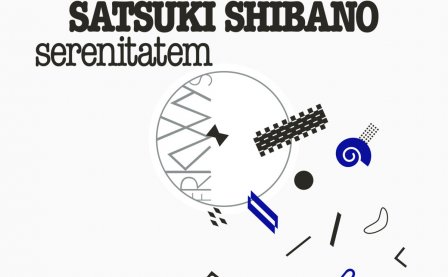Reassemblage already feels peculiarly familiar, but the residue it leaves behind is oddly intangible. Peculiar in its familiarity, because its surfaces ostensibly reflect the increasingly elusive border between natural and artificial — and the even more fraught border between cultures whose histories have already bound them together for the past couple of centuries (at least).
It’s certainly not that we’ve never heard anything like these quasi-naturalistic washes of unnatural replications, software versions of traditional Japanese instruments, oddly processed voices, intermittently liquid horizons. But it may well be that Reassemblage’s familiarity could at least partially be explained by the only partly-detected filtering of the various mixes — the curation and “digging” that Spencer Doran (half of Visible Cloaks — Ryan Carlile is the other half) is known for — into the collective technological unconsciousness of this part of the musical world: For months, before I had even heard this album, whatever fucking algorithm YouTube uses was recommending “obscure” Japanese ambient artists whose presence there as a node in the technological curation of my “taste” might well have been at least partly ascribable to a regurgitated, algorithmic bastardization of Doran’s human labor.
A fitting anecdote? Maybe for something. In any case, the kinds of textures, kinds of references Reassemblage makes use of, pleasant though they are, are no longer all that surprising. It could be that it’s a sign of the success of a more general global technical paradigm. Or maybe it’s just that the apparently exotic ingredients are so neatly, so seamlessly integrated (with the necessary nod here — and see below — to the suggestion that what’s happening is neither the most vulgar form of appropriation nor mere recapitulation) that they are no longer noticeably alien in a way they might once have been.
But, as much as that aspect could be emphasized, Reassemblage is still for the most part oddly intangible too. It may be placid and serene, but it can also be alienating. Its intangibility plays on a low-key unpredictability; structures must be there somewhere, because it doesn’t just come apart in my hands, but my bleary eyes don’t see any fractal micro/macro recapitulation. I don’t see a whole in the parts. There can be a ritualistic feel to some moments, but it’s ritualistic with little repetition. However, Reassemblage is not, as a rule, dependent on repetition for the effects it produces; for example, the ongoing manipulation of loops, subtle or not so subtle, is not a concern.
For myself, I can’t resist inserting some opinion here (“What, you mean the rest of it wasn’t?”): although not making use of loops or repetition that were present in the various above-mentioned mixes might be something that sets Visible Cloaks apart from a number of their inspirations (and even their earlier work as Cloaks), it may not be for the better. And as for the place of circumstance, it’s obviously a preference or weakness of mine that there is very little musically that pleases me more than a coincidence, a mistake, something external taken up and inward, transformed into the essential element of the music. But on Reassemblage, I can perceive no internal or internalized necessity to what happens. I perceive only shapes of a tranquil kind of contingency, a host of serene accidents floating by on the surface of a deeper current I can’t see, the forces and obstacles shaping not clearly detectable as part of the audible outward appearances.
And it’s certain — well, we know from testimony — that there are fascinating processes, technically speaking, underlying the creation of many of the elements of Reassemblage. It’s not hard to wonder if that means that the true source of the album’s interest is not so much in its repertoire of sounds, as congenial as they might be, but in these processes — and that’s something hard to derive from a naive engagement with it. It would probably be foolish to attempt to determine exactly how the availability of technology, the forces of production, the economic structure, etc. etc., and the desire (conscious, or not) to produce certain sounds go together using just whatever outdated human organs we happen to have. Good thing my “team” is working on an equation, which will allow us to predict with a truly excellent success rate not just the ratio of musical innovation to technological innovation, but the precise forms the former will take in concrete instances.
In the meantime, we’ll have to make do with the album’s most tangible moments, and the ones that in the of haze of repeated listens stay with me tend to be collaborative — most noticeably the collaboration with Miyako Koda, originating in a genuine piece of intercultural back-and-forth. Luckily, as they sometimes say, there’s no need to speak the same language, to steal a slogan without substantiating it. Communication, whatever that might mean, doesn’t have to rely on leveling or reducing everything to a common code, to bland homogeneity, and a lot can happen in the interplay between fundamentally different, apparently incommensurable schemata without having to reach the suppressing stage — at least I hope so! It’d be nice to have a multiplication of tongues, a derangement of epitaphs, a global utopia (but not necessarily an impossibility) where fucking with the automation of composition, creation, curation ceases to be an experiment, a gimmick — or, as these things have been so often until very recently, a failure — and… well, who knows. Maybe then you can stick Reassemblage somewhere minor on the royal road in that development, and you’ll have a better view of those technical “processes” than you could get with the messy mechanisms of incus, malleus, cochlear and whatever the rest of that nonsense is going on or not in your bodily being.
More about: Visible Cloaks




